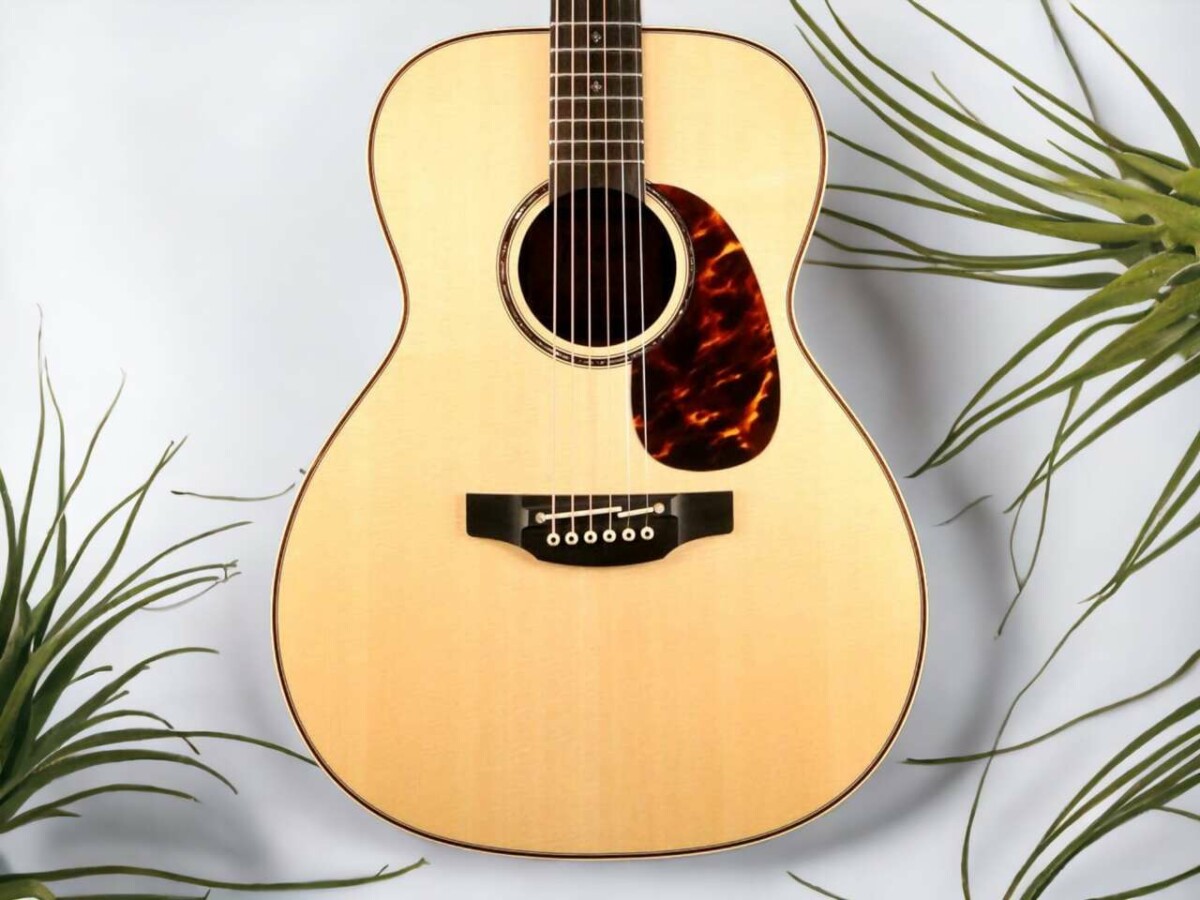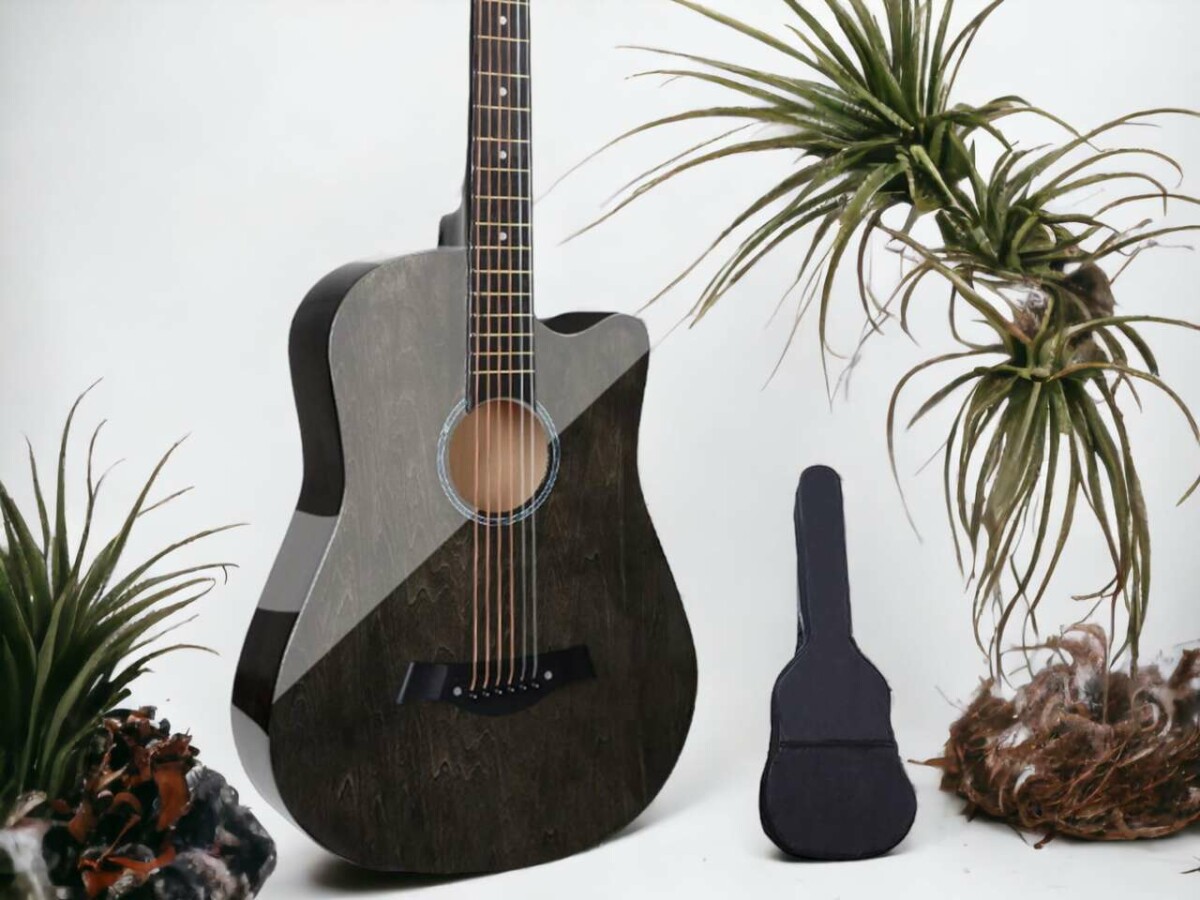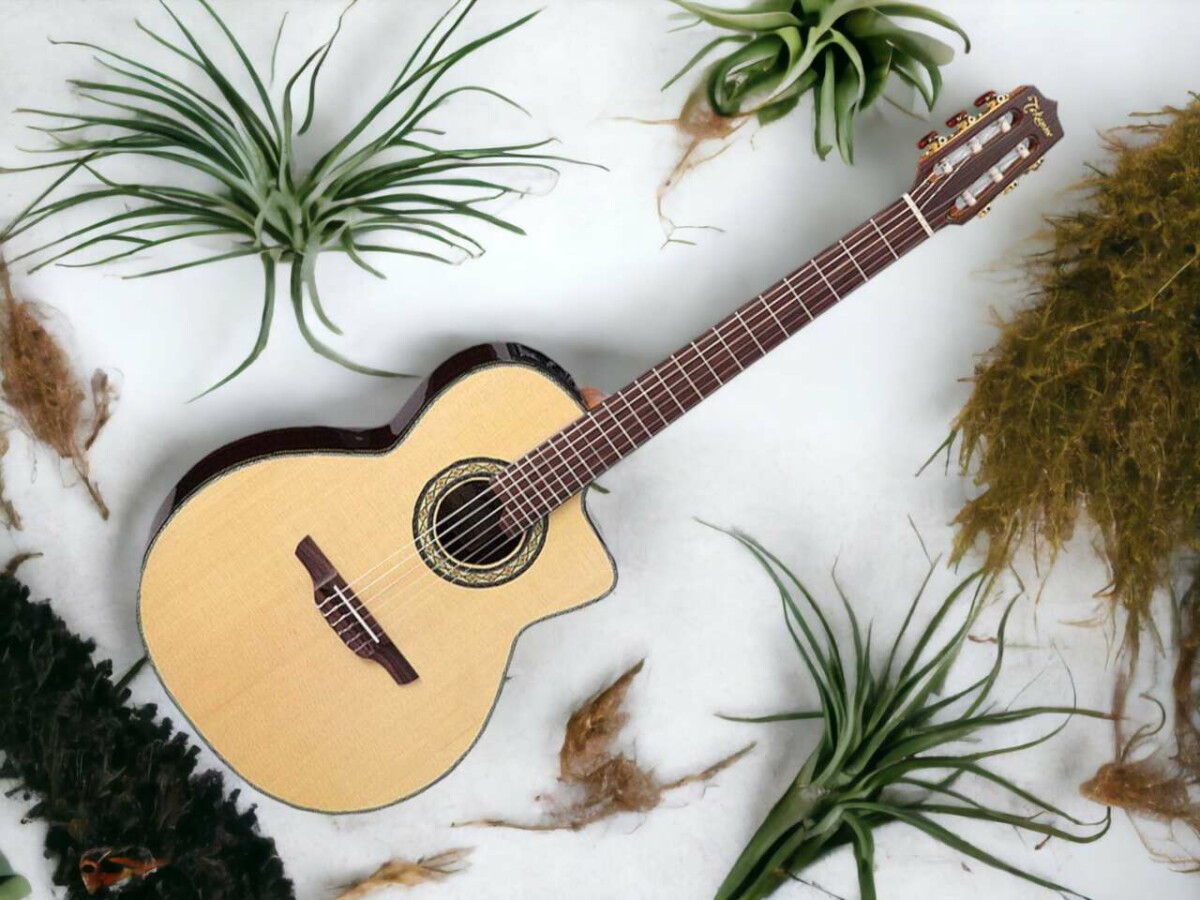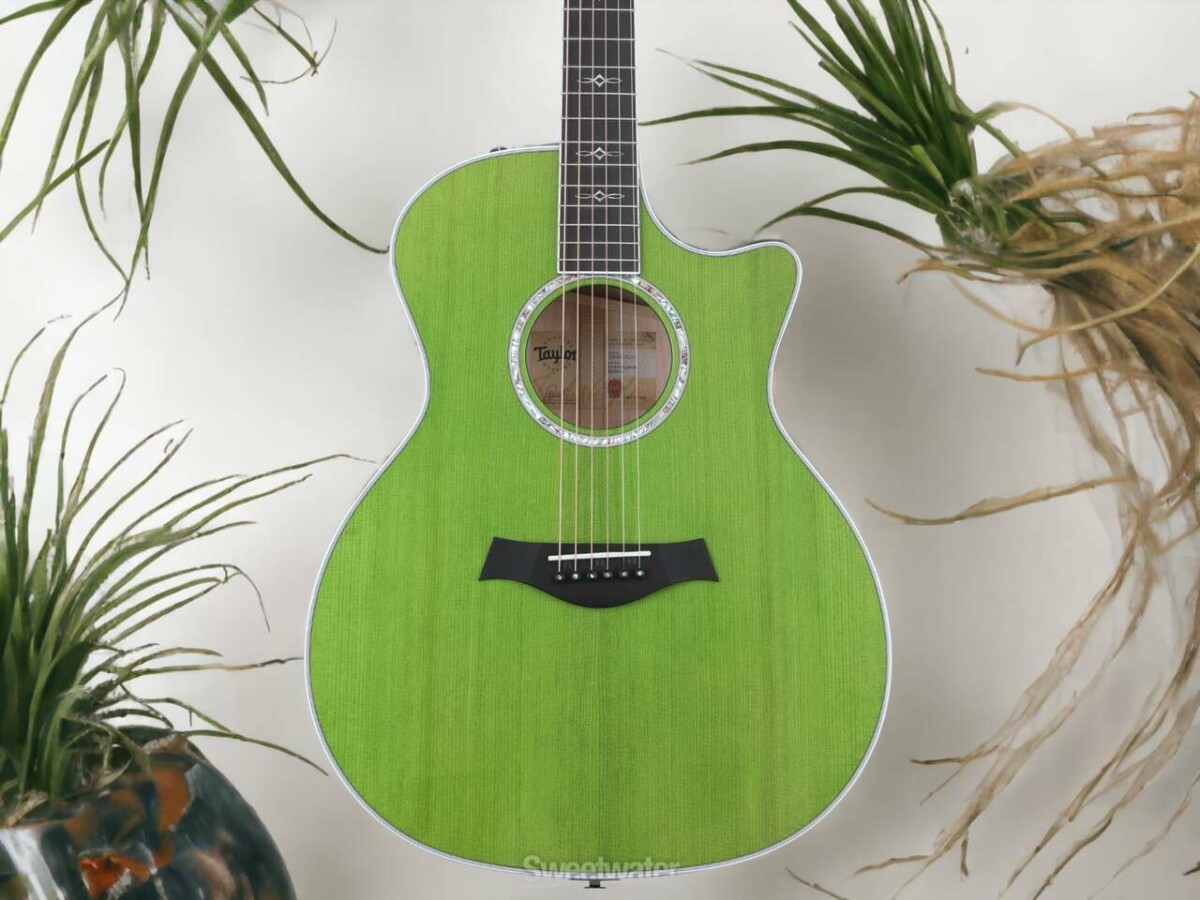‘So, you’ve always had this vibe that the mellow tunes of a ukulele could whisk you away to a beach in Hawaii, right?
Well, brace yourself for a plot twist. It’s not Hawaiian in the least! In fact, the ukulele’s roots dig deep into the soils of a tiny Portuguese island called Madeira.
Buckle up as we go on a time-travelling adventure to see how the artisans of Madeira breathed life into this much-loved instrument. We’ll even cross paths with a Hawaiian king who was totally smitten by its allure.
So, kick back, chillax and let’s dive into the unexpected saga of the ukulele’s beginnings. Trust me, it’s a journey worth taking.’
Ukuleles: A Brief Origin
Ukuleles trace their roots back to Hawaii, but the instrument’s design was heavily influenced by small guitars brought by Portuguese immigrants in the late 19th century.
Bet you didn’t know that the ukulele, despite its strong Hawaiian vibes, was actually born on Madeira, a tiny slice of paradise in the Atlantic, hanging out southwest of Portugal. The distinct sound of this instrument, brought to life by the gentle strums on its four nylon strings tuned to G-C-E-A, has been a game-changer in the music scene. The ukulele’s straightforward chords, coupled with the diverse sounds it delivers, makes it a hot favorite among musicians all over the globe.
Strike a simple C major chord on a ukulele, and you’ll feel the magic. There’s a certain warmth and resonance in the sound that turns even the most basic chord into a deep and emotional experience. This unique sound quality is part of what’s catapulted the ukulele to worldwide fame and made it a staple in music education. When it comes to playing techniques, there’s a range, but strumming the strings with your thumb or index finger is the most common. If you’re into spicing things up, fingerpicking techniques can add a delightful twist to your tunes, creating a rich, layered sound. It’s astounding how such a small instrument can deliver such a complex sound.
But the ukulele’s charm doesn’t stop at simply delivering good vibes. It’s become a legit tool for teaching music theory and composition. Transitioning from one chord to another is a breeze with this instrument, making it an ideal choice for those just dipping their toes in the world of music. The cultural impact of the ukulele in today’s music is hard to ignore. Its popularity is on an upward trajectory, and its influence on music education is continuously expanding. All these perks, coupled with its unique sound, easy playability, and the sheer joy it brings to players and listeners, are what make the ukulele a musical powerhouse.
The Journey From Madeira to Hawaii
Picture this – it’s the tail end of the 19th century, and you’re stepping away from everything you know in Madeira, setting foot on the sun-kissed sands of Hawaii. You’ve got a knack for working wood and a soft spot for music, particularly the machête and rajão.
Now, this is where the ukulele’s tale gets a spicy twist. You begin to create a fresh instrument, using different types of wood, adding your personal touches, and creating a melody that’s purely unique.
Madeiran Migration Reasons
Let’s take a closer look at why folks from Madeira packed their bags and set off for Hawaii, a pivotal chapter in the story of how the ukulele took a trip from a tiny Portuguese island to the sun-soaked beaches of Hawaii.
You can’t ignore the profound influence the Madeiran culture had on Hawaiian music, a testament to the deep cultural exchange that went down between Madeira and Hawaii.
- Tough times: Life was rough in Madeira, with the economy in a bad shape. So, the hopeful Madeirans set their sights on Hawaii, where opportunities seemed to be in abundance.
- Acts of nature: Back-to-back natural disasters left Madeira in a pretty bad state. So, the Madeirans had no choice but to find a safe haven, and Hawaii provided that.
- Woodworker exodus: Some skilled dudes like Nunes, Dias, and Santo decided to take their talents elsewhere, and boy, did they leave their mark! You can hear it in the unique sound of the ukulele.
- Cultural preservation: The Madeirans didn’t want their culture to fade into oblivion, so they carried their music and the ukulele with them. And we’re all better for it!
Early Hawaiian Ukulele Makers
When folks like Nunes, Dias, and Santo from Madeira relocated to Hawaii, they didn’t just bring their belongings, they brought a rich legacy of craftsmanship. These guys were the OGs of early Hawaiian ukulele making, laying down the ground rules with their insane woodworking skills. Talk about a fusion of talent and culture, right?
The ukuleles they fashioned weren’t just instruments; they were works of art. And the magic ingredient? Koa wood. The importance of this wood in the ukulele game is like the importance of a good espresso in your morning routine – it can’t be overstated. Koa wood, with its stunning beauty and remarkable resonance, was the heart and soul of these Hawaiian treasures.
And these ukuleles didn’t just look good, they sounded amazing too. The rich, warm tones they produced were like a melody of the islands themselves – vibrant, full of life, and utterly captivating.
The guys didn’t stop at just crafting the instruments though; they also came up with intricate chords and playing techniques that added layers of depth to the sound, making the ukulele a staple in not just Hawaiian culture, but all over the world. So, hats off to these pioneers for their contribution to the world of music.
The Craftsmen Behind the First Ukuleles
Just picture the artisans who first whipped up the ukulele: Manuel Nunes, Augusto Dias, and Jose do Espirito Santo. They were the real deal, hand-selecting koa wood for its killer resonance, molding the instrument into that iconic shape we all know and love.
The passion they poured into their work and the painstaking attention to every tiny detail paved the way for the unique sound and timeless appeal of the ukulele. They didn’t just build an instrument; they created a legacy.
Early Ukulele Builders
So, here’s the lowdown. Three major players, Manuel Nunes, Augusto Dias, and Jose do Espirito Santo, were the OGs of ukulele building. These dudes journeyed all the way to Hawaii in the late 1800s, and with them, they brought these super rad instruments.
Their influence in today’s music scene? Totally off the charts.
- They came up with their own way of playing these bad boys, zeroing in on the unique G-C-E-A chord progression.
- The sound of their ukes? Pure magic. The way koa wood resonates, it’s like nothing else, and it’s become the signature sound of the ukulele.
- As for cultural impact, the uke went from being an immigrant’s toy to a legit symbol of Hawaiian pride.
- And let’s not forget, they paved the way for all the ukulele makers that came after them, keeping the tradition of craftsmanship and innovation alive.
These ukulele pioneers have left a lasting impression on music, not just in Hawaii, but all over the world. Truly legendary, right?
Influence on Ukulele Evolution
When you take a deep dive into the evolution of the ukulele, there’s no way you can overlook the massive impact made by the original master craftsmen, Nunes, Dias, and Santo. They’re not just names from a history book; these guys are the real MVPs of the ukulele game. The impact they’d on today’s ukulele designs is still loud and clear. They were super picky about using koa wood for their creations, and for good reason. This wood is known for its super rich sound quality and sweet visuals.
And let’s not forget the G-C-E-A chord tuning. This wasn’t just a random choice, they set the standard for how the ukulele is played. So, if you’ve ever wondered why your ukulele sounds so good, you have these guys to thank.
But their skills didn’t just stop at the design level though, they literally changed the face of popular music. The ukulele’s signature sound has made its way into a bunch of different music genres, adding a special touch that’s unmistakable.
Distinct Characteristics of Hawaiian Ukuleles
Let’s take a moment to appreciate the evolution of the ukulele, which made some serious strides in the late 1800s. You’ll find that Hawaiian ukuleles, which are quite different from their Portuguese cousins, were typically made from the stunning and tonally impressive koa wood. Seriously, you can’t downplay the role of koa wood in the ukulele game—it’s got this warm, rich tone that just sings with every strum, totally giving off those Hawaiian vibes.
But hold up, it’s not just about what they’re made of. Hawaiian ukuleles often show off some pretty epic artistic details, turning each one into a little masterpiece. I’m talking everything from killer inlays to wicked carved headstocks. These features amp up the visual appeal, making these ukes a treat for the eyes and the ears.
Now, let’s dive into what really sets a Hawaiian ukulele apart:
- Chords and Fingerings: The Hawaiian uke scene is all about those open tunings. Basically, if you strum the strings without pushing down any frets, you get a major chord. This is a total game changer for playing harmonic progressions and it’s what gives the ukulele that iconic, joyous sound.
- Strumming Techniques: The ‘up-down’ strumming pattern is a big hit in Hawaiian ukulele tunes. It brings this rhythmic, upbeat sound that’s hard to resist.
- Dynamics and Tempo: There’s never a dull moment with Hawaiian ukulele music. They play around with dynamic shifts and tempo changes, adding layers of emotion to each performance.
- Fingerpicking: This is where you pluck individual strings with your fingers. It’s a common move in Hawaiian ukulele music and it brings a rich, complex sound to the table.
The Royal Influence on Ukulele’s Popularity
King David Kalakaua was a game-changer for the ukulele. This guy wasn’t just a king, but a musician and composer too, and his love for the ukulele was a huge deal in making it popular. He was all about including ukulele performances at royal get-togethers, majorly upping its cool factor.
But let’s not forget about the other royal family members, they were pretty instrumental too. Hawaiian royalty had a real knack for the ukulele’s charm. The magic was all in the way their fingers danced over the four strings, captivating everyone around. From the soft strumming to the complex finger-picking, the rhythmic taps – they all came together to create a sound that was pure Hawaii.
And then there was Princess Lili’uokalani, the King’s sister. She was a boss at playing the ukulele and composing music. She was all about spreading the ukulele love, not just among the royals, but to everyone. The royal family didn’t just stop at playing the ukulele, they were its biggest fans. They endorsed it, pushed it and even made it a part of Hawaiian music education.
To them, the ukulele was way more than just an instrument. It was a symbol of their culture, their roots, and their passion for music. Their influence helped the ukulele to become an integral part of Hawaiian culture. The impact of the Hawaiian royalty on the ukulele scene was major, and you can still feel their influence today in every strum and chord of the instrument.
Tracing the Etymology of ‘Ukulele
Ever scratched your head, wondering where the quirky term ‘ukulele’ came from? Let’s take a deep dive into the possible roots of this fascinating term and its linguistic ties.
First Up: Some folks reckon ‘ukulele’ means ‘jumping flea’ in Hawaiian. Why’s that? Maybe because when you’re playing it, your fingers are bouncing around the fretboard super fast, just like a flea.
Another Thought: There’s a theory that ‘uku’ means a gift or reward, and ‘lele’ is to come. So, the ukulele could be a gift that came to the Hawaiians. Pretty cool, right?
Out of Left Field: A less popular idea is that the name could mean ‘wooden belly,’ as a nod to the hollow body of the instrument that gives it its unique sound.
Last One: There are whispers that ‘ukulele’ might be a name given to a Portuguese instrument, the machete, which found its way to Hawaii in the 19th century.
No matter where the term ‘ukulele’ came from, there’s no denying the impact this little instrument has had. The rich, warm tones and vibrant resonance have charmed musicians all over the world. From the soft, soothing strum of the nylon strings to the complex fingerpicking techniques, each chord on the uke has its own unique, soulful vibe.
While the exact origins might be a bit murky, there’s no question about the ukulele’s huge influence on the music scene.






